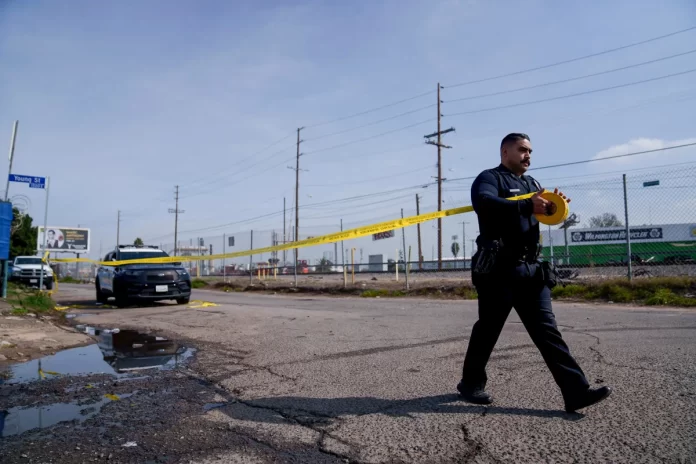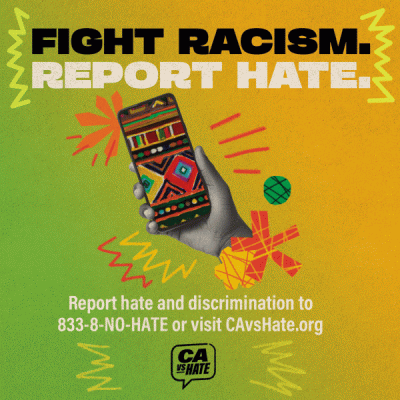
By
Californians have gone back and forth on crime and punishment for years.
In 1994, they voted for harsher criminal penalties and a three-strikes law.
Twenty years later, in 2014, nearly 60% of voters approved Proposition 47, which sought to reduce the state’s prison and jail populations by changing some felony crimes into misdemeanors and directing more state money to drug and mental health rehabilitation.
Now, another 10 years on, Californians are apparently ready to reverse course again by undoing some of the changes made by Prop. 47. A new poll shows they support by a wide margin the November ballot measure Proposition 36, which would toughen sentences for certain property and drug crimes.
Treating California voters as a predictable monolith is a national pastime, but it doesn’t appear to be true. Voters in the last 30 years have reversed course once on criminal justice and appear ready to do so again.
Here are six other myths about California crime — from street violence and guns to prisons and death row — and the truth behind them.
Myth: Street-level crime makes California cities unlivable
If crime is making California cities unlivable today, then it stands to reason that California cities must have been more livable in the last few decades, because crime must have been lower.
Except that’s not remotely the case. Statewide in 2023, the violent crime rate was 511 per 100,000 people. The high, in 1992, was slightly more than double that rate..
Even back then, and despite a violent uprising after a jury acquitted four police officers of assault in the beating of Rodney King, Los Angeles made Money Magazine’s top 50 most livable cities in 1992. So did San Francisco, Oakland and San Diego.
California’s overall violent crime drop has been huge, falling 47% between 1993 and 2022, the last year for which national data is available. The state has mirrored a slightly bigger violent crime rate drop of 49% during the same period.
The last time the violent crime rate was as low as it is now: 1970.
Property crime hit its high in California in 1980, and hasn’t returned to those levels in any decade since.
Even so, a pandemic jump in state property crime levels, especially larcenies, has alarmed many retailers and residents of some major cities, including Oakland.
Those concerns led to a raft of retail theft laws Newsom signed recently, making it easier to prosecute suspects accused of property crimes. They also shaped Prop. 36, the November ballot measure backed by district attorneys and major retailers to increase penalties for some theft and drug crimes – something the governor opposes.
Myth: California opened up its prisons 15 years ago, putting criminals back on the street
Decades of tough-on-crime laws in the 1980s and 1990s created a problem for California prisons: There were too many inmates and nowhere to put them. At its most crowded point in 2006, California prisons housed 173,000 people, more than double the system’s designed capacity.
In 2009, a three-judge federal panel declared overcrowding to be the main reason for health care deficiencies in the prison system, and mandated that the state reduce its prison population by about 30%.
The result was a decade-long experiment in criminal justice called “realignment.” By reducing the number of crimes that were considered felonies, California’s prisons slowly dropped their numbers – about 92,000 people this year – and they are expected to keep dropping.
That meant more people started serving their sentences in jails instead of prisons for crimes that were non-violent, non-serious and non-sexual. The change helped contribute to a lower incarceration rate statewide.
In 2014, voters went further, approving Prop. 47, which reduced certain property and drug crimes from felonies to misdemeanors. Those changes are now up for reconsideration with Prop. 36.
So while California didn’t simply open its prison doors, it did conduct the biggest reduction in a state prison population in U.S. history.
Now, 17 other states and the federal Bureau of Prisons are housing more inmates than their prisons were designed to hold and eyeing California’s experience as a potential model.
Myth: Prop. 47 is the main reason California’s prison population dropped
Supporters of Prop. 47 pledged the measure would save the state billions of dollars while also helping to reduce the populations of the state’s overcrowded prisons.
Inmate numbers dropped steadily for most of the last decade, then rapidly during the pandemic. A year-long study by the Public Policy Institute of California found that inmate releases during the COVID-19 pandemic were a much bigger factor in bringing the population of both prisons and jails down.
With a much larger prison population, California’s incarceration rate dropped 8% after Prop. 47 became law, according to the report’s analysis. Between 2014 and 2019, the prison population dropped from 135,000 to about 120,000, or about 11%.
By comparison, the prison population in the height of the pandemic between March 2020 and February 2021 dropped 23%, from 123,100 to 94,600.
Myth: California gun laws are ineffective
California voters have consistently supported stern gun control measures, a decision partly taken out of their hands when, in 2022, the U.S. Supreme Court threw out New York state’s tight restrictions on who can carry a concealed firearm in public.
Since then, Newsom has tried to generate support for his proposed U.S. Constitutional amendment that would place new nationwide restrictions on gun ownership – to little avail so far.
California’s gun control laws include some of the nation’s most expansive, from waiting periods and background checks to gun storage and licensing.
The health statistics argue California’s gun laws are protecting lives. According to the federal Centers for Disease Control and Prevention, California had the sixth-lowest gun death rate in the country in 2022, the last year for which statistics were available.



